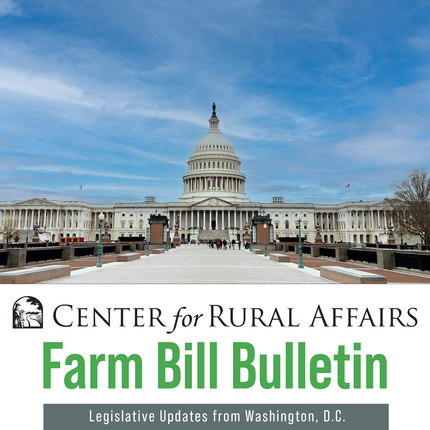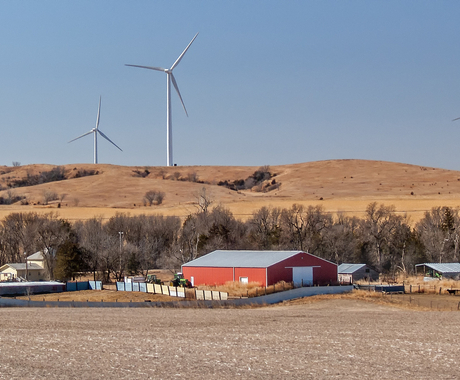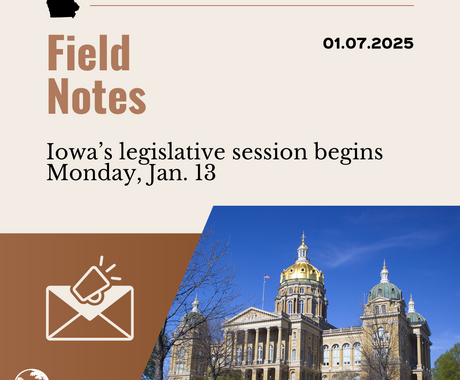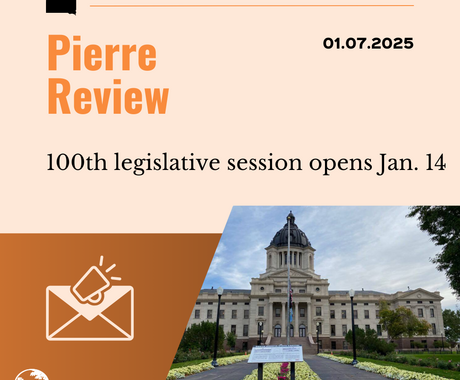By Kate Hansen, former staff member
This blog is part of our “Farm Bill Bulletin” series, which provides intermittent updates on the development and status of our nation’s next farm bill.
In recent weeks, farm bill progress was limited as other developments in Congress took priority. Lawmakers elected a new Speaker of the House, and now face a Nov. 17 deadline to reach an agreement on spending or shut down the government.
Despite these dynamics, leaders in both chambers are calling for action on the farm bill. In the short term, we will most likely see an extension of the 2018 legislation. As negotiations about the new farm bill continue, members of Congress should consider crop insurance subsidy limits.
Federal crop insurance was first authorized in the 1930s in the wake of the Great Depression and Dust Bowl. It exists to help farmers and ranchers manage risk and keep the agricultural economy stable. Today, there are more than a dozen insurance plans for producers to choose from to protect against perils, such as disastrous weather and market fluctuations.
Crop insurance is an important risk management tool for thousands of producers across the country. In difficult times, it can be the difference between farming another year and shuttering an operation. The cost of purchasing crop insurance is subsidized by the government, making coverage more affordable. Unfortunately, in practice, this benefits a select few the most.
Billions of dollars a year are spent subsidizing crop insurance—both for producers, as well as administrative costs for private insurance companies that sell the policies. In the farm bill, the price tag for crop insurance is the second highest of any title.
Such an investment of taxpayer dollars should be made prudently. Yet, unlike other major farm subsidy programs, there is no limit for how much a single producer can receive in crop insurance subsidies. With subsidies roughly proportional to an operation’s size, most dollars go to the largest and wealthiest producers.
Analysis by the U.S. Government Accountability Office sheds light on a single wealthy farmer who received an average of $1.2 million annually in premium subsidies. In the same period, operations with an average annual gross income (AGI) below $900,000—the vast majority of our nation’s farms and ranches—received an average of $7,480. Notably, the $1.2 million does not include the earnings from crop production or insurance payouts due to loss—it is subsidizing costs alone.
This example is one part of a larger story. In the 1960s, a report by the National Advisory Commission on Rural Poverty estimated that the largest 20% of farms received more than 50% of federal program benefits. In 2019, a similar study found the largest 10% of farms received more than 60% of the pie.
The solution to the problem is not drastic. A modest limit or cap to subsidies would impact a very small percentage of our nation’s richest farmers, and save billions in taxpayer dollars.
One proposal in Congress that endeavors to do so is the Assisting Family Farmers Through Insurance Reform Measures Act—known as the AFFIRM Act—which includes a $125,000 annual cap to crop insurance premium discounts. The change would impact less than one percent of farms.
In 2022, Dr. Eric Belasco of Montana State University reported on potential results of such limits. He found that if subsidies were limited to $50,000 per farm, only 3.53% of farms would be impacted, and $16.6 billion taxpayer dollars would be saved over 10 years. In scenarios to reduce premium subsidies for farmers with an AGI more than $900,000, only 1.28% of farms would be impacted.
To keep our rural communities vibrant, taxpayer investments in agriculture should be judicious, considering impact on environment and scale. We hear the benefits of crop insurance every day, and do our part to educate producers about the policies available to them. As negotiations continue, Congress should explore a limit on crop insurance subsidies to ensure these programs are a safety net for all, not unlimited aid to the biggest and wealthiest.





